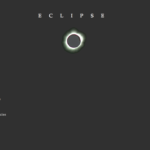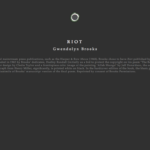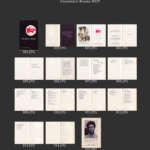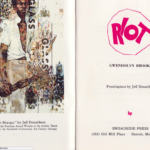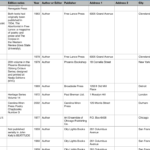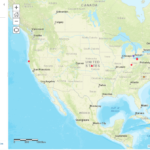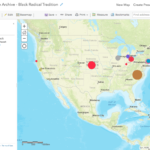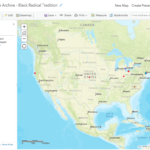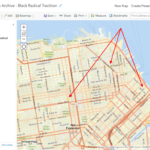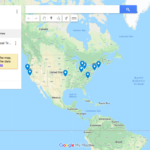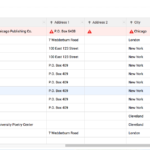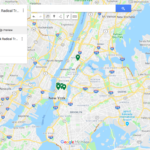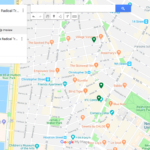1 // In the interest of showing the mangle of my practice, here is a miniature commonplace book of current entanglements with our recent readings on deformance and some additional ones on conspiracy and cunning.
Deformance as Interpretation
2 // Lisa Samuels and Jerome McGann (“Deformance and Interpretation”) tell us that works of imagination “encourage interpreters,” since imaginative work has a performance element to it that is “organized as rhetoric and poiesis rather than as exposition and information-transmission.” They argue that, though scholarly criticism often thinks of itself as operating on the expository, informational end of things, in truth, by virtue of its interpretive practice, scholarly criticism is very much a kind of imaginative work, and as such, it inevitably “lies open to deformative moves.” Deformance, here, is both performing and deformed, scrambling what it enacts, reconstructing what it consumes–some version of “the Susie-dancing-Olga scene” in Suspiria (2018), if you’ve had a chance to see it.
3 // What Samuels and McGann are getting at is not unlike what Lev Manovich describes in The Language of New Media, if you think of, here, a text as a “database” and deformative or interpretive reading or criticism as a “narrative”:
As a cultural form, the database represents the world as a list of items, and it refuses to order this list. In contrast, a narrative creates a cause-and-effect trajectory of seemingly unordered items (events). Therefore, database and narrative are natural enemies. Competing for the same territory of human culture, each claims an exclusive right to make meaning out of the world.
Manovich also quotes Mikhail Kaufman (Man with a Movie Camera) in an illustration I find helpful:
An ordinary person finds himself in some sort of environment, gets lost amidst the zillions of phenomena, and observes these phenomena from a bad vantage point. He registers one phenomenon very well, registers a second and a third, but has no idea of where they may lead. But the man with a movie camera is infused with the particular thought that he is actually seeing the world for other people. Do you understand? He joins these phenomena with others, from elsewhere, which may not even have been filmed by him. Like a kind of scholar he is able to gather empirical observations in one place and then in another. And that is actually the way in which the world has come to be understood.
4 // Texts, Samuels and McGann say, “lose their vital force when they succumb to familiarization,” suggesting that it’s only through defamiliarizing them, through “disordering one’s senses of the work” by cutting through them via “strange diagonals”–that is to say, through making them something that they weren’t before–that we strengthen and propel texts forward. This all sounds like interesting, important, and necessary work.
And yet, deformance also “turns off the controls that organize the… system;” creates results that we “cannot predict;” puts us in a “highly idiosyncratic relation” to things; reorders, isolates, alters, and forcefully inserts; and ultimately changes the previously agreed upon terms for investigation. This, to me, even as one who “gets it”–appropriative conceptual poetry is a primary research interest of mine–is a dangerous rhetoric made all the more dangerous by our current cultural and political climate of trolling, gaslighting, indifference to truth, skepticism of institutions/-al knowledge, and rampant, blatant disinformation.
Deformance as Conspiracy
5 // There are two quotes from Stephen Ramsay’s Algorithmic Criticism that I highlighted during my first reading because of the way they position deformative interpretation as an intentional rejection of fact:
We read and interpret, and we urge others to accept our readings and interpretations. Were we to strike upon a reading or interpretation so unambiguous as to remove hermeneutical questions that arise, we would cease to refer to the activity of reading and interpretation. […] If text analysis is to participate in literary critical endeavor in some manner beyond fact-checking, it must endeavor to assist the critic in the unfolding of interpretive possibilities.
And:
It is in such results that the critic seeks not facts, but patterns. And from pattern the critic may move to the grander rhetorical formations that constitute critical reading.
Elsewhere, Ramsay notes that “pattern” (not fact) is the thing that “unites art, science, and criticism,” and says that literary criticism operates within a framework in which “the specifically scientific meaning of fact, metric, verification, and evidence simply do not apply.” Here, “‘evidence’ stands as a metaphor,” and readings are not the text itself, but new things where “data has been paraphrased, elaborated, selected, truncated, and transduced.”
Though I don’t believe this is what Ramsay himself is doing or suggesting at all–ditto Samuels and McGann above–there is a rhetoric and methodology here that focuses on non-facts and patterns, on the perceived slipperiness of fact and veracity, on building arbitrary patterns into grander formations, on urging others to accept one’s interpretations. The result is that, even when it is meant to liberate literary criticism, such thinking still inadvertently brings criticism squarely into the realm of conspiracy theory, a place that, at its worst, I think we are all very uncomfortable getting close to, given its current status as an alt-right, white nationalist breeding ground.
6 // Does the fact that one can create a brief reading list that links speculative literature and racist/nationalist “alternative beliefs” say anything about the inherent magnetic attraction between deformative criticism and conspiracy theory? (FWIW: Part 2 of this reading list is on the much more palatable topic of aliens.)
7 // In her (very short) essay “Some Preliminary Notes on Conspiracy as Theory” (PDF below) Astrid Lorange writes about “the way that [scholarly] research requires special attention to a set of often imperceptible connections that reveal themselves as increasingly relevant, as if they spoke to a larger whole mostly hidden, apparent only by effort.”
Astrid Lorange – Some Preliminary Notes on Conspiracy as Theory
Here’s one beefy section:
Let’s say we consider scholarship a close ally of conspiracy theory; the practice of research, we can claim, is akin to a mode of thought that perceives, through a strange collusion of paranoia, desire, and experimental detective work, a theory of connectivity that belies a large but difficult-to-see truth… If the aim of the scholar is to uncover hidden truths through the disciplined labor of focusing-in, the conspiracy theorist’s aim is to uncover hidden truths through the the disciplined labor of focusing-out.
Here’s another:
For conspiracy theories, the final reveal reveals that what we feared all along was, indeed, there all along, and the reward is the knowledge of what we knew but could not prove. For scholarship, the final reveal reveals that what we assumed we knew was in fact a falsehood, a red herring, and the reward is the knowledge of the limits of our knowledge.
Even though Lorange frames conspiracy theory and scholarship as moving in opposite directions, the fact that they are doing so on the same track suggests something important about the underlying assumptions that gives her (and me) pause.
Deformance as Cunning
8 // To further complicate matters, I’ve scanned a few pages from Paul Chan’s introduction to a new-ish translation of Plato’s controversial Hippias Minor (or, The Art of Cunning) with a link to the PDF, if you want to take a look:
Paul Chan – Introduction to Hippias Minor
Hippias Minor is so controversial, Chan writes, because in it Socrates argues that there is “no difference between a person who tells the truth and one who lies, that an intentional liar is better than an unintentional one, and that the good man is the one who willingly makes mistakes and does wrong and unjust things,” a position which, initially, is remarkably counter-intuitive, given our longstanding familiarity with Socrates’s relentless pursuit of ideals and objective truths. But rather than reading this as an endorsement of lying for lying’s sake, Chan makes a case for reading this as Socrates’s “advocating for a novel way of thinking about the political potential of the creative act.”
It comes down to a dispute about greatness: Achilles versus Odysseus. The interlocutor Hippias argues that Achilles is more excellent because he tells the truth and Odysseus lies (about his identity, his motives, etc.); Socrates argues that Odysseus is more excellent because his lying is a form of versatility, adaptability, craftiness, and resourcefulness: it is, as Chan puts it, “his creative instinct.” This “cunning” allows Odysseus “to see what he is able (or not able) to get away with by finding or even inventing choices where none are evident or given.” In this way, Odysseus is not lying, but demonstrating through performance “how understanding what is most real and true about reality enables one to more ably reshape it for one’s benefit or pleasure.” Chan links lying back to reason, somehow, in a move I’m still trying to work out in my now-broken brain.
Is this what Samuels and McGann and Ramsay are getting at when they talk about deformance: cunning? Is such an idea compelling or sufficient enough, in 2018?
9 // Here’s a link to (another very short) essay, this time by Édouard U., that employs the concept of conspiracy theory to articulate a pedagogical deformative reading practice that builds personal relationships to ideas and texts and makes meaning through itinerant (rather than linear) wanderings:
My methods for avoiding this type of linear constriction have been simple: Read two or more books at the same time, always. Reject the closed-universe-on-rails nature of every single film ever made, and when possible, use the Wikipedia-while-watching technique to keep connecting the dots as I go. Always encourage myself to follow footnotes into rabbit-hole oblivion. Surf—don’t search—the web. Avoid listening to music simply to listen to music. Instead, intentionally mix and match sounds and styles as one might mix ingredients within a recipe…
At what point might conspiracy-theory mapping with push pins and thread become a more common learning technique for students, to encourage them to make their own connections and find their own lines of meaning?
He later calls this a “networked approach to reading,” by the way, which seems very DH, very “play” (it’s so in right now).
10 // Does our deformative work tacitly tolerate conspiracy theory? Does it passively or hypocritically reject it? Does the cunning we display in our deformative criticism adequately justify any proximity we show to the practices of dangerous people with alternative beliefs? Is deformance simply the way of the future, a spectrum with both good and bad poles?
I know that these don’t all align. And I know that, somewhere (or -wheres) in here, I’m wrong. Tell me where I am. What am I missing, misconstruing, forgetting about? Did I get any of it right?
